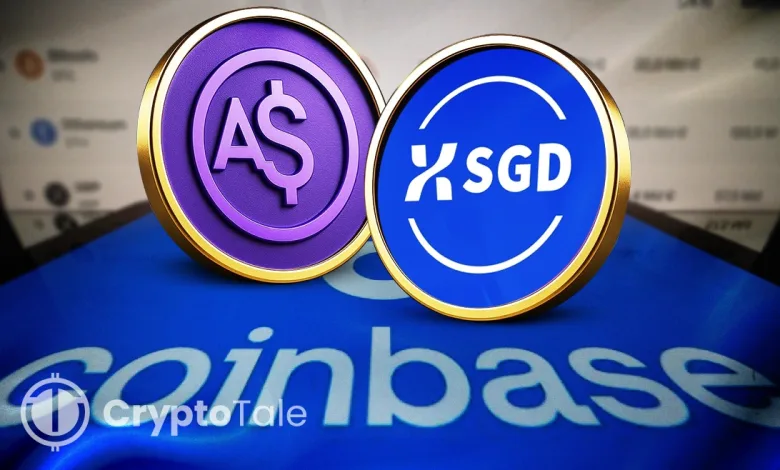Coinbase Introduces AUDD, XSGD to Boost Local Stablecoins

- Coinbase introduces AUDD and XSGD stablecoins, challenging USD dominance in DeFi.
- Local stablecoins AUDD and XSGD provide fee-free conversions, catering to regional users.
- The rise of non-dollar stablecoins could reshape global crypto dynamics and DeFi markets.
Coinbase has introduced AUDD and XSGD stablecoins, pegged to the Australian and Singapore dollars, respectively. The tokens would be available starting September 29, at 19:00 UTC. This move is part of Coinbase’s strategy to localize cryptocurrency and provide users with stablecoins tied to their own currencies, challenging the dominance of USD-backed stablecoins like USDC and USDT in decentralized finance (DeFi).
The stablecoin market is rapidly expanding, with global adoption growing each year. By June 2025, the market is set to surpass $250 billion in market cap, reflecting a surge in both transaction volume and interest from businesses. For years, the U.S. dollar has been the primary currency behind stablecoins, but local alternatives like AUDD and XSGD aim to shift this dominance.
New Rollouts for Local Crypto Payments
The two stablecoins would enable users in Australia and Singapore to avoid fees when converting the country’s local fiat into the tokens. Coinbase’s goal is to cater to local markets by offering more accessible, region-specific solutions.
The company is aiming to serve more local markets with regionally-based solutions. Coinbase hopes that allowing more people to transact using currencies they are already familiar with would help the company onboard new crypto users.
Coinbase’s decision may threaten the primacy of leading USD-backed stablecoins like USDC and USDT. These tokens have now taken over global crypto markets. But with local stablecoins getting more significant, USD’s dominance in the market may decline.
Australian Digital Dollar (AUDD) is backed 1:1 with the Australian dollar, while XSGD, issued by StraitsX, is backed by the Singapore dollar and approved by the Monetary Authority of Singapore (MAS). XSGD is in line with new standards under the Single Currency Stablecoin (SCS) regime, to which it has been designed according to high levels of regulation.
Related: Tether’s $500B Bid Sparks Debate on Stablecoin Future Role
A Shift in Global Crypto Dynamics
Local stablecoins like AUDD and XSGD have powerful use cases when compared to their USD competitor. Within users’ own regions, the tokens are bought quickly, without exposing them to commission fees or exchange rate conversion.
According to a survey by Ipsos for Coinbase, over 70% of crypto holders in Australia and Singapore said they would like to be able to use locally issued stablecoins, indicating the growing adoption for tailored solutions in the cryptocurrency space. Local alternatives are starting to come up and make waves, despite the currency dominance of USD-backed tokens. Analysts estimate the stablecoin market could reach $2 trillion in a few years, and non-dollar stablecoins could be at its core.
Stablecoins backed by USD continue to be the most prevalent in the market of today. The introduction of AUDD and XSGD could challenge this dominance. If successful, regional stablecoins could be the next field for regional crypto growth. This transition could foreshadow a world where DeFi transactions aren’t only locked to the U.S. dollar but instead mirror a globally diverse system.
As the stablecoin market continues to mature, it’s obvious that native currencies will have a much larger role. If successful, Coinbase’s effort could be a game-changer for the Asia-Pacific and beyond. And if these new stablecoins succeed, they might provide a way for bigger adoption of crypto on a global scale.




